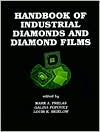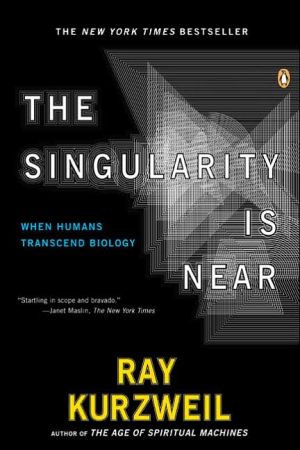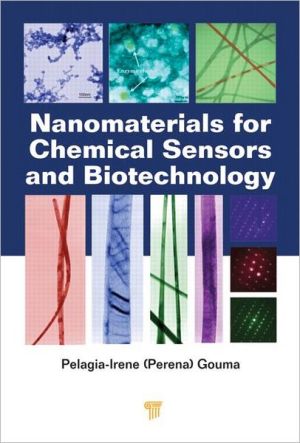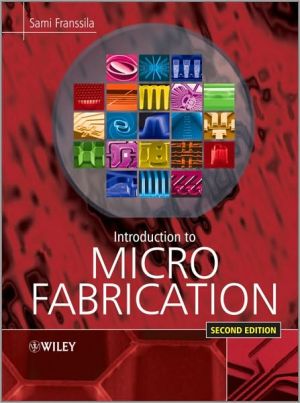Handbook of Industrial Diamonds and Diamond Films
Examines both mined and synthetic diamonds and diamond films. The text offers coverage on the use of diamond as an engineering material, integrating original research on the science, technology and applications of diamond. It discusses the use of chemical vapour deposition grown diamonds in electronics, cutting tools, wear resistant coatings, thermal management, optics and acoustics, as well as in new products.
Search in google:
Examines both mined and synthetic diamonds and diamond films. The text offers coverage on the use of diamond as an engineering material, integrating original research on the science, technology and applications of diamond. It discusses the use of chemical vapour deposition grown diamonds in electronics, cutting tools, wear resistant coatings, thermal management, optics and acoustics, as well as in new products. Booknews Thirty-four contributions discuss diamond (both mined and synthetic) as an engineering material, emphasizing diamond's role in modern technology and its various applications. Topics include the electrical, thermal, mechanical and optical properties; methods for characterization; hot filament, microwave, radio frequency plasma, arc jet plasma, combustion-based, and laser-based CVD growth; cost models that involve operating and marketing expenses; current applications, such as abrasives and wear resistant coatings; and future applications. An indispensable guide for scientists and engineers in the industry as well as materials, chemical, mechanical, electrical and electronics, optical, and semiconductor engineers, physicists, materials and biomedical scientists, and upper-level undergraduate and graduate students in these disciplines. Annotation c. by Book News, Inc., Portland, Or.
PrefaceContributors1Band Structure12Diamond Morphology193Mechanical Properties of Diamond, Diamond Films, Diamond-Like Carbon, and Like-Diamond Materials494Surface Properties of Diamond895Heat Capacity, Conductivity, and the Thermal Coefficient of Expansion1476Thermal Measurement Techniques1937Optical Properties2278Electrical and Electronic Properties3779Characterization Methods41310Natural Diamond48111Theory of Diamond Chemical Vapor Deposition52712Section 1: Introduction58413Section 2: Basic Processes in Plasmas Under Conditions Typical for Diamond Deposition58714Section 3: Basic Processes: Plasma/Surface Interactions61515Section 4: The Boltzmann Equation63116Section 5: Flow Modeling for a Plasma Assisted Diamond Deposition Reactor65317Section 6: Electromagnetic Field Modeling of Diamond CVD Reactors67318Section 7.1: Modeling of the Diffusional Transport of an H[subscript 2] Plasma Obtained Under Diamond Deposition Discharge Conditions69719Section 7.2: Spatially Resolved Spectroscopic Analysis of the Plasma73920Hot-Filament CVD Methods79721Microwave Plasma Chemical Vapor Deposition of Diamond82122Diamond CVD Using Radio-Frequency Plasmas85123Arcjet Synthesis of Diamond86524Low Temperature CVD88725Nucleation and Epitaxy90126Ion Implantation of Diamond and Diamond Films94527Processing98328Abrasive Applications of Diamond102329Active Devices104330Applications of Diamond in Computers107331Diamond Vacuum Electronics110332Special Applications112933Cutting and Wear Applications113534Economics and Commercialization1149Index1179
\ BooknewsThirty-four contributions discuss diamond (both mined and synthetic) as an engineering material, emphasizing diamond's role in modern technology and its various applications. Topics include the electrical, thermal, mechanical and optical properties; methods for characterization; hot filament, microwave, radio frequency plasma, arc jet plasma, combustion-based, and laser-based CVD growth; cost models that involve operating and marketing expenses; current applications, such as abrasives and wear resistant coatings; and future applications. An indispensable guide for scientists and engineers in the industry as well as materials, chemical, mechanical, electrical and electronics, optical, and semiconductor engineers, physicists, materials and biomedical scientists, and upper-level undergraduate and graduate students in these disciplines. Annotation c. by Book News, Inc., Portland, Or.\ \








